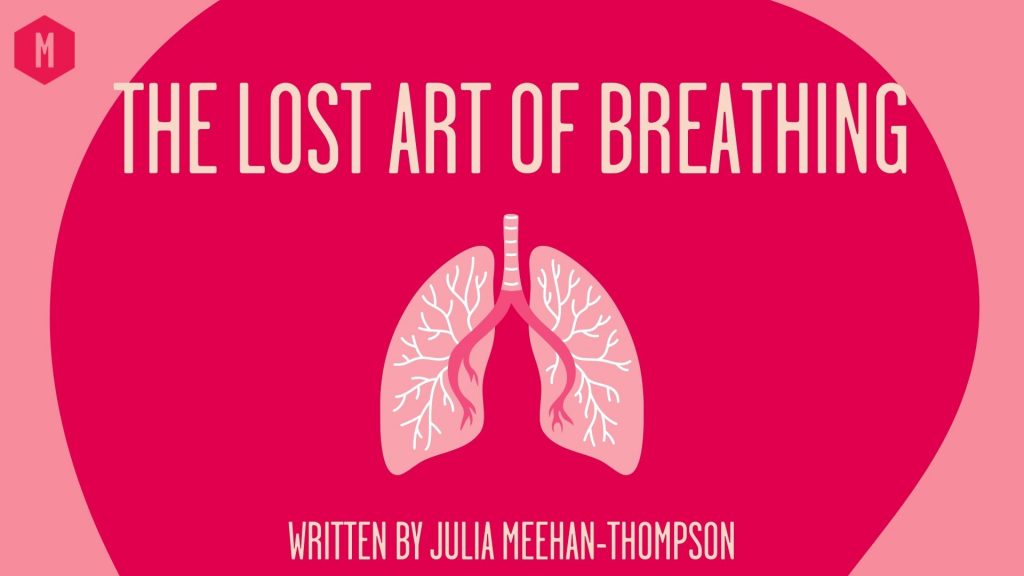
Have we lost the art of breathing well? This article explores the secret known to ascetics across the ages. Why is breathing so important for optimum health?
The coronavirus pandemic shines a spotlight on how we breathe as we navigate shops, trains, planes and crowded places wearing face masks to protect each other from virus-laden droplets. But the new awareness of this vital function highlights a painful truth: In the last few centuries, through a combination of factors, we have lost the art of breathing properly. Rediscovering it has never been more necessary.
“Before we know it, breathing slow, less and through the nose with a big exhale will be big business, like so much else,” notes James Nestor, author of Breath, the new science of a lost art.
The Magic of Breathing
The way we breathe,affects the body in unimaginable ways: it boosts brain and immune function; calms nerves; tempers the body; feeds blood and bones — everything, really, that makes us human. Breathing efficiently helps us think clearly, run longer and faster, sleep more deeply, live longer and cope with a number of other debilitating conditions. Mystics, ascetics and spiritual travellers have expounded the magic of breathing techniques for millennia as a gateway to a better life.
In essence, longer breaths may equate a longer life. “The yogi’s life is not measured by the number of his days, but the number of his breaths,” writes celebrated yoga teacher B.K.S Iyengar in his book Light on Yoga.
Calmer, more relaxed, more energetic
As a practice, breathwork is becoming fashionable. Probably because it works. And probably, too, because we are living through a pandemic that attacks the lungs. As a yoga teacher, I have seen first–hand the life-changing effect of correct breathing technique in my students. After teaching the 4-7-8 breathing technique, made famous by Dr Andrew Weil, to my 84-year-old mother, Paulina, her breathing transformed. She now feels calmer, more relaxed and more energetic.
“Why has no one taught me to breathe correctly?” she asked, perplexed. Quite the opposite – why is it that life takes away this birth right? If you watch a baby breathe, you can see them inhale deeply, filling up their lungs and activating their deep stomach muscles. I have used sandbags to encourage deep breathing with my clients who are chest breathers, and watched their faces soften, shoulders ease, and a sense of calm return to their faces as they engage their deeper breathing muscles.
Breathing and the way we eat
It seems we lose the ability to breathe fully and freely as life throws things at us: stress, fright, fear and now, the social media posts and relentless email that can trigger micro-breathing. The art of breathing well has also been chipped at thorough historical changes to our diet. The consumption of processed food has affected the shape of our jaw, mouth and nose. This is forcing many of us to breathe through our mouths instead of our noses, and thus becoming inefficient breathers.
“Focusing on my breathing pattern in my daily life changed everything,” notes Anders Olsson, founder of Conscious Breathing. Olsson set out to become an expert in breathing and now runs instructor training courses alongside breathing courses and produces gadgets to strengthen the breathing muscles. Olsson, like many ascetics before him, walked away from his everyday life to pursue his quest.
The Power of Pranayama
For millennia, yogis, Taoists, and Native Americans have expounded the benefits of proper nasal breathing and controlled breathing practices, such as pranayama. Some scientists are mystified that controlled breathing is not practiced more widely. “We assume, at our peril, that breathing is a passive action, just something that we do: breathe, live; stop breathing die,” notes Nestor, an investigative journalist.
As a yogi, I have learned that my breath, or prana, is the single most important aspect not only of being alive but of my yoga technique. The extreme Dutch athlete Wim Hof knows this too. As an early adopter of the ancient breathing techniques, he has achieved amazing human feats in freezing conditions. And has dedicated much of his life since 2000 to teaching his methods of breathing, cold exposure and meditation practices. He launched his app in 2015.
Breathing techniques, when harnessed correctly, are powerful but without proper guidance they can also be dangerous. Light-headedness and sickness are just two I have experienced. There are many breathing techniques out there. “If I had to limit my advice on healthier living to just one tip, it would be simply to learn how to breathe better,” breathing expert Dr. Weil has said.
Inspired? Recover the lost art of breathing with an MFML course
A number of courses and classes on MFML support you to explore breathing. Time to Breathe offers a number of different ways of connecting with your breath. The ten day breath challenge with Dan Peppiatt helps you to dive deeper into breathwork.
About Julia Meehan-Thompson:

Anglo-Chilean Julia M. Thompson is a yoga teacher, coffee-loving editor and writer with previous reporting stints in Venezuela, Chile, US, UK, Austria and Germany. She is fluent in Spanish and is an UN-accredited translator.





Leave a Reply